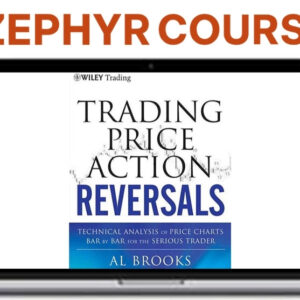Description
Why Central Bank Decisions Move Markets
Because central banks set key interest rates and manage monetary policy, their decisions have a direct impact on financial markets.
When you trade, you’ll notice how a single interest rate announcement can trigger rapid shifts in asset prices. Markets react instantly because traders try to anticipate how changes in rates will affect economic growth, inflation, and corporate profits.
If a central bank unexpectedly raises or lowers its interest rate, you’ll often see a spike in market volatility as investors adjust their positions.
Even hints or statements from central bank officials can move markets, since traders scrutinize every word for clues about future policy shifts.
Understanding these connections helps you manage risk and spot opportunities when central banks set the tone for global markets.
Key Insights From Axia Futures’ Central Bank Course
Given how central bank decisions can spark sharp market moves, it’s important to have a framework for trading around these events.
Axia Futures’ Central Bank Course provides you with a structured approach, focusing on understanding both the direct impact of central bank policy changes and the underlying market psychology driving price action.
You’ll learn to recognize the signals that markets react to, such as tone shifts in central bank statements or unexpected data in meeting minutes.
The course emphasizes the importance of context: not just what central banks say, but how market participants interpret and position for those announcements.
By studying historical reactions and behavioral tendencies, you can anticipate potential volatility and adapt your strategy.
Ultimately, Axia’s insights help you approach central bank events with confidence and discipline.
Practical Techniques for Trading Central Bank Events
A well-defined game plan is essential when trading around central bank events, as markets can become highly volatile within seconds of a major announcement. Start by identifying key levels and scenarios before the release.
Don’t chase price—let the initial volatility settle, then look for clear setups. Use tight stops to manage risk, since market volatility can spike unexpectedly. Always size positions conservatively, as wild swings can trigger outsized losses.
Focus on your trading psychology. Stay disciplined and stick to your plan, even if price action gets erratic. Avoid emotional decisions; central bank events often produce whipsaws that tempt traders into mistakes.
Review your trades post-event to refine your approach. By combining preparation, risk management, and psychological discipline, you’ll navigate these high-impact moments more effectively.
Frequently Asked Questions
What Is the Cost of Enrolling in Axia Futures’ Central Bank Course?
When you’re looking at enrollment options, you’ll find course prices can vary based on packages and potential course discounts. Check the provider’s website directly, since they often update pricing and offer special enrollment deals throughout the year.
Are There Any Prerequisites for Joining the Axia Futures Program?
When you look into program requirements, you’ll see you don’t need prior trading experience to apply. The application process asks for your motivation and background details, but you won’t face strict prerequisites before joining this program.
Is the Course Suitable for Complete Beginners in Trading?
If you’re wondering about course suitability for beginner trading, you’ll be glad to know you don’t need prior experience. As a complete beginner, you can join and build a strong foundation in trading concepts and strategies.
Does Axia Futures Provide Ongoing Mentorship After the Course?
If you’re looking for ongoing support and mentorship benefits after the course, you’ll be pleased to know you won’t be left on your own. You’ll receive guidance and resources that help reinforce your learning and trading confidence.
How Long Does the Central Bank Trading Strategies Course Last?
When you’re considering course duration, expect most trading courses to last from several days to a few weeks. You’ll gain essential learning outcomes, like understanding central bank policy impacts and improving your trade decision-making skills.








